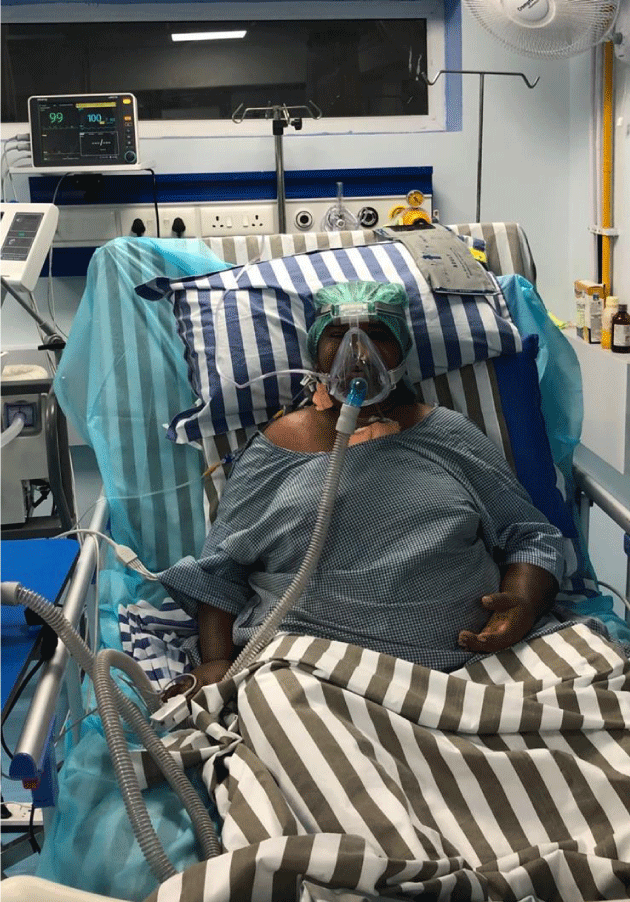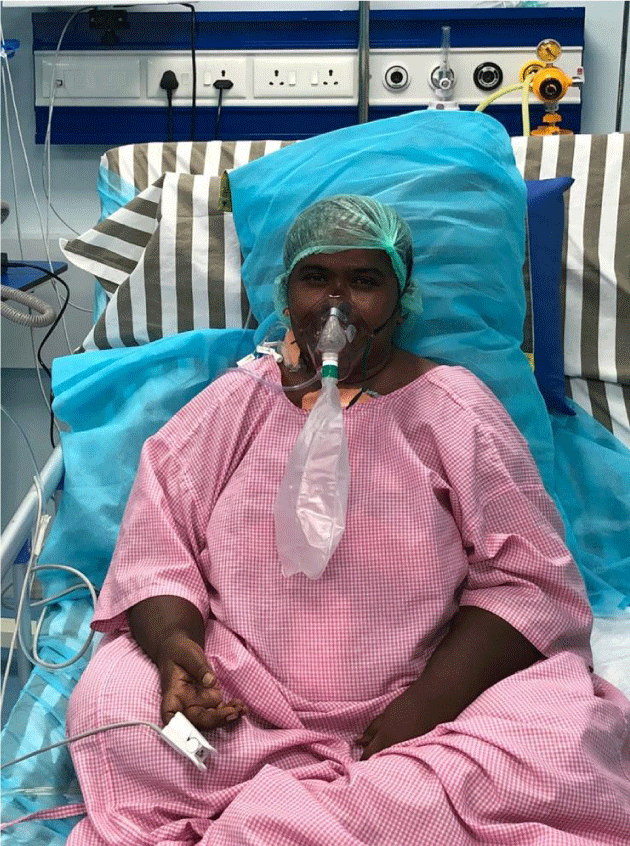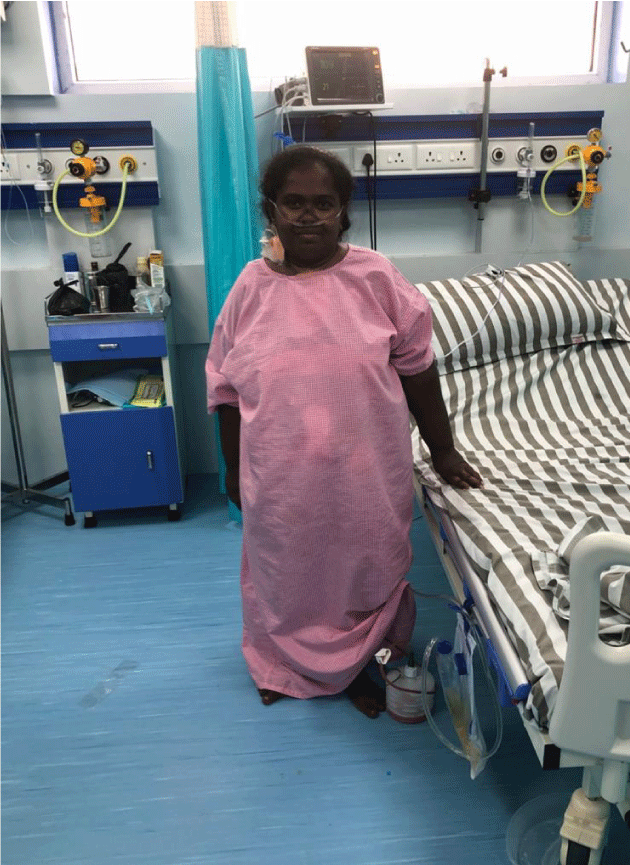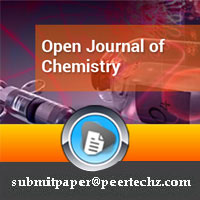Open Journal of Chemistry
Scope of a short & obese patient for thymoma surgery with the risk of difficulty in weaning from general anaesthesia
Krishna Prasad T1*, Ajit Kumar Kayal2, Kavin Adhithya2 and Balu Sankar2
2Professor of Practice, Assistant Professor, Consultant, Shri Balaji Vidyapeeth University, Pondichery, India
Cite this as
Krishna Prasad T, Kayal AK, Adhithya K, Sankar B (2024) Scope of a short & obese patient for thymoma surgery with the risk of difficulty in weaning from general anaesthesia. Open Journal of Chemistry 10(1): 020-023. DOI: 10.17352/ojc.000035Copyright
© 2024 Krishna Prasad T, et al. This is an open-access article distributed under the terms of the Creative Commons Attribution License, which permits unrestricted use, distribution, and reproduction in any medium, provided the original author and source are credited.Background
Obese patients had more difficulty with tracheal intubation and a higher incidence of post-extubation stridor. Obesity is such a ubiquitous issue in our culture, and it is a significant risk factor for many diseases, thus it is not surprising that many obese patients are treated in ICU. The objective of this article is to explore challenges for short, obese patients (Little’s) in the critical care setting. Obese patients have a strong correlation between lung function and body fat distribution, with greater impairment when fat accumulates in the chest and abdomen. Mediastinal masses, particularly those located in the anterior mediastinum, can cause perioperative morbidity and mortality by causing major airway and vascular compression, which may be exacerbated under general anesthesia.
Scope of an obese patient with the likelihood of trouble in weaning. Swelling and obesity can compress the diaphragm, lungs, and chest cavity mechanically, which can lead to restrictive pulmonary damage. Many case reports exist of anesthesia-related deadly or almost fatal consequences in patients with anterior mediastinal masses. Successful management requires knowledge of the pathophysiology of the mediastinal mass about critical structures, a thorough preoperative evaluation of the patient, communication with the surgeon, and readiness for the management of cardiorespiratory complications resulting from compression of the trachea and vascular structures. These symptoms may worsen in supine positions. Positive end-expiratory pressure can help avoid end-expiratory airway closure and atelectasis, especially in the dorsal lung areas. Weaning off obese patients from a major surgery, from artificial breathing is always a challenging task.
Case description
A 39-year-old female with a thymoma and huge ventral hernia was scheduled to undergo general anesthesia. During the pre-anesthetic evaluation, the patient was found to be moderately obese, with a BMI of 32 and short stature Height of 132 cm (4 feet and 4 inches). She had a retreating mandible, and his neck movements were significantly limited by a big thymoma in the anterior part of the thoracic cavity. Her overall neck circumference was approximately 20 inches. She has Mallampatti-grade 4 airways. He had a history of snoring and numerous sleep-wake cycles at night. She has exertional breathlessness and it gets exaggerated at moderate physical activity. The patient also reported sleeping in an upright position, which was suggestive of Obstructive Sleep Apnoea (OSA). However, the patient had not received an appropriate clinical examination for OSA. Spirometry showed moderate restriction in lung functions FEV1 of 63% (1.5 L), FVC of 55% (1.7 L) FEV1/FVC of 62%. We started incentive spirometry exercises for the patient and adequate chest physiotherapy to improve lung functions preoperatively. The patient was explained about about need for postoperative ventilation in the intensive care unit, keeping in mind the difficulty in weaning. The presence of a large quantity of adipose tissue on the anterior neck and chest wall, limited neck mobility caused by a thymoma in the anterior part of the thorax, and a history of OSA and a little receding chin led us to choose awake FOB-guided intubation as our first and only alternative for airway management. Paralysing such a patient without a definitive airway would be a difficult situation to ventilate. A cold spatula test was used to determine the patency of the nares. The method for awake intubation was thoroughly described to the patient. The patient gave written informed consent.
The patient was obese and had a history of OSA, therefore premedication was avoided. On the day of surgery, the airway was anesthetized for 20 minutes with 10 ml of 4% lignocaine nebulized before intubation. Standard ASA monitors were fitted to the patient when he was transferred to the operating table. After the patient had been comfortably positioned, a flexible bronchoscope with an endotracheal tube was inserted through the patent nares. 2 ml of 4% lignocaine was sprayed slightly above the cords. A 6.5 mm ID nasally cuffed endotracheal tube was inserted and fastened. General anaesthesia was administered shortly after endotracheal tube placement was confirmed, by routine procedure. The fentanyl infusion was kept at 20 mcg/hr for preoperative analgesia and to enhance tolerance of the endotracheal tube, which was retained postoperatively.
The patient’s endotracheal tube was retained due to the difficult airway, history of OSA, and the fact that he had undergone surgical resection within the thoracic cavity as well as a huge ventral hernia with extensive open dissection in the abdomen, which would have made managing a possible airway mishap in the postoperative period extremely difficult. The patient was extubated the next day. Following trial extubation, the patient appeared exceedingly drowsy and maintained a saturation of 91% with difficulty in lung expansion. So on the first surgical day, she received non-invasive ventilation (NIV), as shown in Figure 1. On the third postoperative day after weaning from NIV, the patient maintained oxygenation PaO2 level below 50%, so again CPAP was started for 3 days and an alternate method of NRBM was tried. On the 7th day after the surgery, the patient was weaned from CPAP and put on a Non-rebreathing mask with 10 liters flow, and then the next day with nasal prongs and mobilized to the ward. As shown in Figures 2,3. Even in a ward, the patient was monitored for blood oxygen levels and improved lung expansion with extensive spirometry exercises.
For the continuous sampling of arterial blood gas, we had an arterial line monitor, and a central line for fluid and electrolyte balance in the intensive care setup. Lung function tests and flow volume loops have been used, although their usefulness in the diagnosis of mediastinal tumors is questionable. Flow volume loops have been indicated during thoracic surgeries. Also, with their alleged ability to assess the degree of impairment and distinguish between extra-thoracic and intrathoracic blockage, investigations have demonstrated that they correlate poorly with the degree of airway obstruction and do not alter the anesthetic technique.
The fact that lung capacity is lowered during general anesthesia, as well as the relaxation of bronchial smooth muscle, has been proposed as a cause for the hazards of general anesthesia. Muscle relaxant-induced diaphragm paralysis lowers the normal transpleural pressure gradient, causing the airway to dilate. This reduces the caliber of the airways and increases the efficacy of extrinsic compression. In patients with large anterior mediastinal masses causing significant cardiopulmonary compromise, the risk of intraoperative cardiopulmonary collapse during a diagnostic procedure requiring general anesthesia must be carefully balanced against the risk of diagnostic inaccuracy of preoperative treatment.
In patients with SVC obstruction and extended procedures, there is also a risk of glottic edema and post-operative stridor. Airway complications may be more likely during emergence and recovery. Extubation of the airway should only be performed if the patient is entirely conscious, obeying directions, and has fully recovered muscle strength. Short-acting anesthetic drugs, opioids, and muscle relaxants may be beneficial. Even after successful extubation, the patient should be closely followed in the postanesthetic care unit, with the anaesthesiologist ready to reintubate the patient if necessary, as deterioration can occur quickly [1].
Outcome and follow-up
The patient was admitted for 14 days and discharged with lung physiotherapy exercises.
Discussion
Obesity places a significant strain on the respiratory system in the form of thoracic and abdominal fat [2]. The objective of this article is to explore some of the basic ideas related to caring for short, obese patients in the critical care setting [3]. The mass of the abdomen against the diaphragm also limits the typical range of diaphragmatic excursion. Obese patients have a higher risk for developing atelectasis during spontaneous breathing than non-obese patients due to reduced lung and chest wall compliance as well as higher tidal volumes in the obese. We also found that patients had significantly higher PaCO2 levels despite higher tidal volumes. This observation is probably due to ventilation/perfusion mismatching related to early airway closure in obese patients.
Patients under general anesthesia have reduced functional residual capacity in part due to decreased respiratory muscle tone, resulting in a new lung-chest wall equilibrium at a reduced overall respiratory system volume [4,5]. There is also the cranial displacement of the diaphragm during general anesthesia and in the supine posture, which leads to the development of atelectasis, particularly in obese patients, because the displaced abdominal mass is extremely heavy. Atelectasis reduces gas exchange while increasing physiological shunt, ventilation-perfusion mismatch, and labor of breathing. Extra fat affects overall respiratory system compliance, raises pulmonary resistance, and weakens respiratory muscle strength. It’s fascinating that metabolic syndrome affects lung function, and that the combination of obesity and metabolic syndrome appears to worsen lung function even more. Postoperative pulmonary considerations in the post-anesthesia care unit are similar to those of the intraoperative phase: maintaining the lung open and preventing atelectasis should be the main priorities of the anaesthesiologist.
A recruiting maneuver is an important technique for individuals with pulmonary atelectasis because it homogenizes lung tissue. A recruiting maneuver is the temporary use of end-expiratory pressures that are much higher than pleural pressure. The driving pressure is often applied over several seconds to allow for the opening of “slow-fill” alveolar units. The applied pressure gradient must be high enough to expand collapsed alveoli with opening pressures greater than the normal ventilating peak pressures. The peak end-inspiratory pressure, not the PEEP, recruits atelectatic alveoli [1].
Mechanical ventilation for highly obese patients using Pressure Support Ventilation (PSV) may be the best option for an obese patient because it requires some physical effort (with the diaphragm and accessory respiratory muscles) to initiate each ventilator-delivered breath. Maintaining muscle tone may help in weaning from artificial ventilation and preventing posterior-basilar atelectasis during surgery can be technically challenging, including maintaining a patent airway, adequately ventilating the lungs, and successfully removing the patient from the ventilator. Our study focuses on the second challenge which is adequately venting the short, obese patient’s lungs during surgery, as well as the pre-and postoperative use of Non-Invasive Ventilation (NIV) in the obese patient. We observed that NIV was better tolerated [6-10]. In the days that followed, NIV assistance was progressively reduced and its duration was extended by the clinical symptoms and ABG measurements.
The patient triggered and cycled breaths during the NIV trial improved the strength of the respiratory muscles, and the ability to cough out secretions, therefore expediting the weaning process effectively. Psychologically, the patient is more confident with enhanced communication, hence improving the quality of life while making the weaning process seamless [11,13].
Obese patients are far more likely to develop aspiration pneumonia. This problem is very common in the postoperative period. Several factors contribute to the risk of aspiration, including a higher volume of stomach fluid, a lower than usual pH of the gastric fluid in fasting obese patients, increased intra-abdominal pressure, and a higher prevalence of gastroesophageal reflux [14,15]. This is yet another compelling argument to nurse the obese patient in a semi-upright posture. This makes postoperative treatment for obese patients critical in preventing postsurgical pulmonary problems. We recommend Steppin down from higher pressure oxygen delivery to lower, as a slow weaning process, one would avoid reintubation rate and complications related to it.
Conclusion
Positive pressure ventilation a weaning technique has never been compared to normal oxygen after obese patients were extubated in the ICU. The care of morbidly obese critically ill patients is a difficult and daunting endeavor. Understanding the pathophysiological changes that occur with obesity and the consequences particular to this group of patients may improve their outcomes. Keeping in mind the risk of aspiration, and further hypercapnia, a wise decision should be made on the weaning from ventilatory devices. The spontaneous breathing trial should be clearly separated from the level of pressure support and PEEP set before extubation and the respiratory support following extubation, to avoid Atelectasis. From extubation to NIV, then slow weaning to NRBM with high flow oxygen support and then step down to low flow oxygen with blood gas monitoring must be done in such patients. It is recommended to prepare for facing complications like acute respiratory failure, gas exchange impairment, and further ARDS and need for ECMO. Airway management in critically ill patients with obesity poses specific challenges, and adequate patient evaluation and grading of the weaning process and the follow-up.
Take-home messages
Standard oxygen alone would have been considered a suboptimal strategy in obese patients especially those at high risk of extubation failure; consequently, weaning from a higher percentage of oxygen delivery devices must be used and slowly switched to lower ones, in a stepwise monitored care.
Declaration of patient consent: There are no Ethical issues. The patient had given her consent for the usage of all relevant clinical information and photos in view of academic importance. She is also aware the names and initials will remain anonymous and that every effort will be taken to hide the patient’s identity.
- Ho LI, Harn HJ, Lien TC, Hu PY, Wang JH. Postextubation laryngeal edema in adults. Risk factor evaluation and prevention by hydrocortisone. Intensive Care Med. 1996 Sep;22(9):933-6. doi: 10.1007/BF02044118. PMID: 8905428.
- Corley A, Bull T, Spooner AJ, Barnett AG, Fraser JF. Direct extubation onto high-flow nasal cannulae post-cardiac surgery versus standard treatment in patients with a BMI ≥30: a randomised controlled trial. Intensive Care Med. 2015 May;41(5):887-94. doi: 10.1007/s00134-015-3765-6. Epub 2015 Apr 8. PMID: 25851385.
- Sahin M, El H, Akkoç I. Comparison of Mask Oxygen Therapy and High-Flow Oxygen Therapy after Cardiopulmonary Bypass in Obese Patients. Can Respir J. 2018 Jan 28;2018:1039635. doi: 10.1155/2018/1039635. PMID: 29623135; PMCID: PMC5829344.
- Choban PS, Weireter LJ Jr, Maynes C. Obesity and increased mortality in blunt trauma. J Trauma. 1991 Sep;31(9):1253-7. doi: 10.1097/00005373-199109000-00009. PMID: 1920556.
- Vaughan RW, Conahan TJ 3rd. Part I: cardiopulmonary consequences of morbid obesity. Life Sci. 1980 Jun 23;26(25):2119-27. doi: 10.1016/0024-3205(80)90598-6. PMID: 6995766.
- Mitra S, Kapoor D, Srivastava M, Sandhu H. Dual mode ventilation: Winning strategy in difficult-to-wean. J Anaesthesiol Clin Pharmacol. 2016 Jan-Mar;32(1):131-2. doi: 10.4103/0970-9185.168260. PMID: 27006569; PMCID: PMC4784205.
- Kacmarek RM, Wanderley HV, Villar J, Berra L. Weaning patients with obesity from ventilatory support. Curr Opin Crit Care. 2021 Jun 1;27(3):311-319. doi: 10.1097/MCC.0000000000000823. PMID: 33797429.
- Delay JM, Sebbane M, Jung B, Nocca D, Verzilli D, Pouzeratte Y, Kamel ME, Fabre JM, Eledjam JJ, Jaber S. The effectiveness of noninvasive positive pressure ventilation to enhance preoxygenation in morbidly obese patients: a randomized controlled study. Anesth Analg. 2008 Nov;107(5):1707-13. doi: 10.1213/ane.0b013e318183909b. PMID: 18931236.
- Frat JP, Gissot V, Ragot S, Desachy A, Runge I, Lebert C, Robert R; Association des Réanimateurs du Centre-Ouest (ARCO) study group. Impact of obesity in mechanically ventilated patients: a prospective study. Intensive Care Med. 2008 Nov;34(11):1991-8. doi: 10.1007/s00134-008-1245-y. Epub 2008 Aug 1. PMID: 18670754.
- Andersen LH, Rovsing L, Olsen KS. GlideScope videolaryngoscope vs. Macintosh direct laryngoscope for intubation of morbidly obese patients: a randomized trial. Acta Anaesthesiol Scand. 2011 Oct;55(9):1090-7. doi: 10.1111/j.1399-6576.2011.02498.x. Epub 2011 Sep 8. PMID: 22092206.
- Defresne AA, Hans GA, Goffin PJ, Bindelle SP, Amabili PJ, DeRoover AM, Poirrier R, Brichant JF, Joris JL. Recruitment of lung volume during surgery neither affects the postoperative spirometry nor the risk of hypoxaemia after laparoscopic gastric bypass in morbidly obese patients: a randomized controlled study. Br J Anaesth. 2014 Sep;113(3):501-7. doi: 10.1093/bja/aeu101. Epub 2014 May 15. PMID: 24833726.
- Richard JC, Maggiore SM, Jonson B, Mancebo J, Lemaire F, Brochard L. Influence of tidal volume on alveolar recruitment. Respective role of PEEP and a recruitment maneuver. Am J Respir Crit Care Med. 2001 Jun;163(7):1609-13. doi: 10.1164/ajrccm.163.7.2004215. PMID: 11401882.
- Dyhr T, Laursen N, Larsson A. Effects of lung recruitment maneuver and positive end-expiratory pressure on lung volume, respiratory mechanics and alveolar gas mixing in patients ventilated after cardiac surgery. Acta Anaesthesiol Scand. 2002 Jul;46(6):717-25. doi: 10.1034/j.1399-6576.2002.460615.x. PMID: 12059898.
- Bajwa SJ, Sehgal V, Bajwa SK. Clinical and critical care concerns in severely ill obese patient. Indian J Endocrinol Metab. 2012 Sep;16(5):740-8. doi: 10.4103/2230-8210.100667. PMID: 23087857; PMCID: PMC3475897.
- Gan TJ. Pharmacokinetic and pharmacodynamic characteristics of medications used for moderate sedation. Clin Pharmacokinet. 2006;45(9):855-69. doi: 10.2165/00003088-200645090-00001. PMID: 16928150.
Article Alerts
Subscribe to our articles alerts and stay tuned.
 This work is licensed under a Creative Commons Attribution 4.0 International License.
This work is licensed under a Creative Commons Attribution 4.0 International License.





 Save to Mendeley
Save to Mendeley
